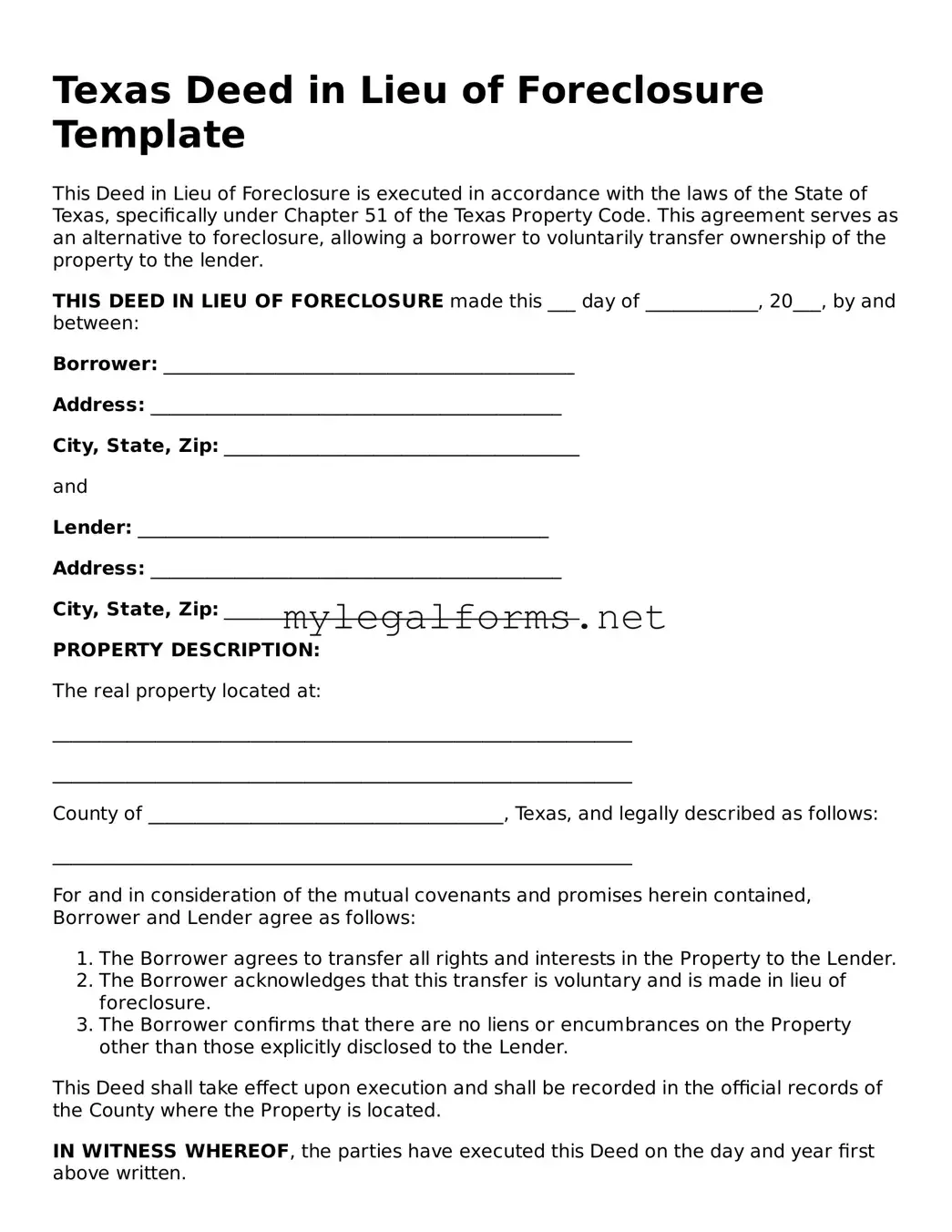Texas Deed in Lieu of Foreclosure Template
This Deed in Lieu of Foreclosure is executed in accordance with the laws of the State of Texas, specifically under Chapter 51 of the Texas Property Code. This agreement serves as an alternative to foreclosure, allowing a borrower to voluntarily transfer ownership of the property to the lender.
THIS DEED IN LIEU OF FORECLOSURE made this ___ day of ____________, 20___, by and between:
Borrower: ____________________________________________
Address: ____________________________________________
City, State, Zip: ______________________________________
and
Lender: ____________________________________________
Address: ____________________________________________
City, State, Zip: ______________________________________
PROPERTY DESCRIPTION:
The real property located at:
______________________________________________________________
______________________________________________________________
County of ______________________________________, Texas, and legally described as follows:
______________________________________________________________
For and in consideration of the mutual covenants and promises herein contained, Borrower and Lender agree as follows:
- The Borrower agrees to transfer all rights and interests in the Property to the Lender.
- The Borrower acknowledges that this transfer is voluntary and is made in lieu of foreclosure.
- The Borrower confirms that there are no liens or encumbrances on the Property other than those explicitly disclosed to the Lender.
This Deed shall take effect upon execution and shall be recorded in the official records of the County where the Property is located.
IN WITNESS WHEREOF, the parties have executed this Deed on the day and year first above written.
______________________________
Borrower Signature
______________________________
Lender Signature
______________________________
Witness Signature
______________________________
Witness Signature
STATE OF TEXAS
COUNTY OF ____________________
Before me, a Notary Public in and for said County and State, on this ____ day of ___________, 20___, personally appeared ______________________, known to me to be the person whose name is subscribed to the foregoing instrument, and acknowledged to me that he/she executed the same for the purposes and consideration therein expressed.
Given under my hand and seal of office.
____________________________________
Notary Public, State of Texas
My Commission Expires: ____________
